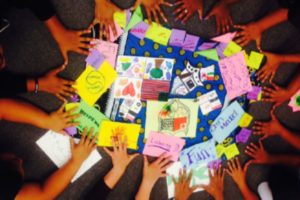Lakeview School District Superintendent Blake Prewitt wakes up each day and scrolls through a dozen or more alerts from Firestorm, the Georgia-based service the district uses to scan through student social media pages across several networks.


Lakeview School District Superintendent Blake Prewitt wakes up each day and scrolls through a dozen or more alerts from Firestorm, the Georgia-based service the district uses to scan through student social media pages across several networks.
Firestorm flags public posts that contain certain keywords and images of violence, or those that mention the district’s schools or community, giving Prewitt a jumpstart on addressing issues before they snowball into something bigger, Wired reports.
The program has helped in an abduction investigation, allowed officials to reach out to families with questions about the dress code, and Prewitt considers the alerts an important tool to keep the district’s 4,000 students and 500 staff safe.
“If someone posts something threatening to someone else, we can contact the families and work with the students before it gets to the point of a fight happening at school,” he told the technology site.
Firestorm is among a host of companies offering to help schools monitor student social media posts in the wake of high-profile school shootings in recent years, most notably the rampage at Marjory Stoneman Douglas High School in Parkland, Florida in February that left 17 dead.
In the Florida shooting, the alleged perpetrator vented his frustrations on social media before the attack – something Firestorm and its competitor, Vermont-based Social Sentinel, are designed to catch.
Gary Margolis, CEO of Social Sentinel, said business is “definitely booming,” and it’s helping administrators track down guns in schools and other threats.
Others, meanwhile, are raising concerns that adults monitoring teens’ social media conversations can easily take things out of context and create more work for themselves than it’s worth.
“Even if you have people directly looking at posts they won’t know what they’re looking at,” said Amanda Lenhart, researcher with the New America Foundation who focuses on teen internet use. “That could be exacerbated by an algorithm that can’t possibly understand the context of what it is seeing.”
Columbia University professor Desman Patton is working with social workers in Chicago to monitor social media in an effort to reduce gang violence. He believes schools may benefit from tracking students’ posts, but warned that interpreting language used by black youth could pose problems and draw increased scrutiny from school officials, Wired reports.
“I think there’s an opportunity for schools to use this as a way to support people but I would do so with extreme caution,” Patton said.
While some focus on effective ways to monitor students on social media, others are examining the underlying reasons why teens – and many adults – are seemingly addicted to Facebook, Twitter and other social media sites.
Chad Welmon and Julia Ticona wrote in The Hedgehog Review, a publication of the Institute for Advanced Studies in Culture:
Believing that we as individuals are solely responsible for our technology-suffused lives, we risk overlooking the ways in which our individual incapacity to say no to Facebook is a cultural incapacity, one that Facebook is not only keen to exploit but also eager to preserve.
The fact sheet “Social Media and School Crises” from the National Association of School Psychologists analyzes the risks and benefits of social media for schools and students, and offers resources for educators to learn more about the issue.